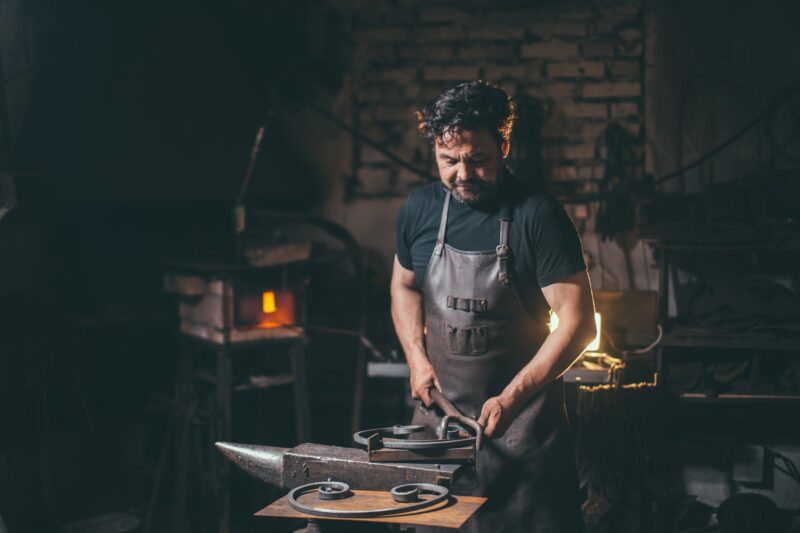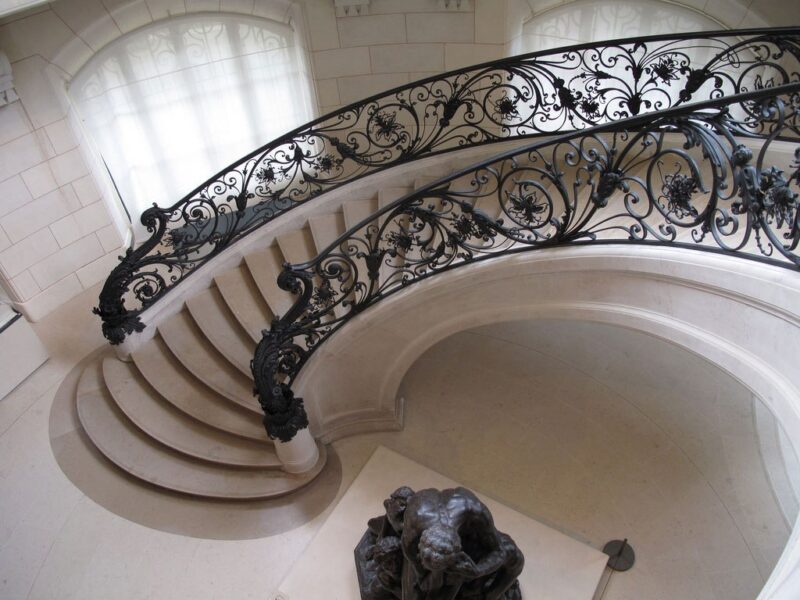What Is Wrought Iron?

There’s no shortage of metal-based materials. One that you may come across in your search for the ideal metal is wrought iron. If you’re like most people, you may not know what wrought iron is or how it’s different from cast iron.
Keep reading to learn what wrought iron is, the history of the metal, and the benefits of wrought iron compared to other metal materials.
Wrought Iron 101
Have you ever wondered “What is wrought iron made of?” In simplest terms, wrought iron is an iron alloy that is created by smelting and fusing iron and slag. This gives the metal its grainy texture that has a wood grain-like texture. Wrought iron is highly refined and consists of around 99.4% iron.
Before the art of steelmaking was advanced and modernized, wrought iron was the most widely available form of malleable iron. Wrought iron gets its name wrought because the metal was hammered or rolled while being hot enough to expel molten slag.
The History of Wrought Iron
Wrought iron is one of the oldest metals to be manufactured. Iron is said to have been used in China during ancient times, but the metal was first introduced to Western Europe during the 15th century. However, in the past, the metal was extremely brittle and wasn’t used for many purposes.
During the Middle Ages, iron was manually produced in bloomeries through the direct reduction of ore. The raw material created by this process is known as pig iron. This type of iron has a high carbon content, which causes it to be extremely brittle. Today’s wrought iron has very little carbon, which is why it’s known for its durability.
In the United States during the 1900s, wrought iron was quickly and economically developed using the Aston process. This process involved using molten steel and then pouring it into a cool liquid slag. When the steel is poured into cool liquid slag, a large amount of the gases are released. The molten steel is then frozen and finished by shingling and rolling.
In the late 1960s, the use of iron started to decline. This is because steel was more commonly used to create railroad rails and other structural applications.
Benefits of Using Wrought Iron
As explained, wrought iron is made of iron that’s been combined with carbon. This gives the metal its strength while also making it malleable. Because wrought iron is malleable when heated to high temperatures, it can be transformed into beautiful shapes and designs.
One of the biggest benefits of using wrought iron is its strength and durability. Unlike other metals, wrought iron is designed to last. Wrought iron is corrosion resistant, which means it’s suitable to use for indoor and outdoor purposes. The material typically only needs to be repainted every 3-5 years.
Even if wrought iron does rust, its structural integrity maintains the material’s durability. This allows plenty of time for wrought iron to be restored back to its original shape.
Because wrought iron is durable, strong, and low maintenance, it’s the ideal material to use for a variety of purposes. Today, wrought iron is used for a variety of applications, including:
- Gates
- Fences
- Doors
- Stair railings
The strength of wrought iron also makes it a trusted material for safety and security. From protecting your home to keeping children away from dangerous areas, wrought iron is a material that you can trust.
Enhance Your Home’s Beauty with Wrought Iron

There’s no shortage of materials that can be used to improve the look of your home. However, if you’re looking for something unique and durable, wrought iron is the best option. At Precise Iron Doors, we offer a variety of wrought iron products that are designed to enhance your home’s beauty and security.
Whether you’re interested in a wrought iron door or a wrought iron gate, you’ll find exactly what you need at Precise Iron Doors. We offer elegant designs and custom design options that will make your home stand out from the rest.
Want to learn more about our wrought iron products? Contact our team today!
